|
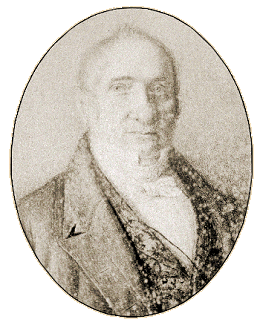
George Benjamin
Thorneycroft |
The business
was founded by George Benjamin Thorneycroft and
his twin brother Edward. They were born in
Tipton on 20th August, 1791 where their parents kept the
Three Furnaces pub. They went to a local school,
but George had little interest in class work,
and only learned to read because his mother made
him read the bible.
At night he
would go into a nearby iron works and became
fascinated with everything that he saw, learning
many processes that would be useful to him in
future years.
The family
moved to Leeds where his father worked at
Kirkstall Forge. Young George soon joined him
and became a puddler, putting to good use many
of the things that he had previously learned
from his night-time visits to the iron works. |
|
In 1809 at the
age of 18, he returned to the Black Country and
worked at Moorcroft Iron Works at Bradley, where
he soon became superintendent of the works.
In 1817 he
founded a small ironworks at Forge Yard,
Waterglade Street, Willenhall, where he lived in
a cottage that stood on the site of the HSBC
bank on the corner of New Road and the Market
Place. It was here that his son Thomas (later
known as Colonel Tom Thorneycroft of Tettenhall
Towers) was born. In his early years George was
a staunch Wesleyan Methodist, who later joined
the Church of England, and gave generously to
Willenhall Chapel. |
|
In 1850 he
purchased the old Molineux estate in Willenhall,
and in 1851 he gave the land for Wood Street
Cemetery in Willenhall to the Methodist church.
The cemetery soon filled and no further
interments were allowed, except in existing
graves, after 21st August, 1856. On 28th
September, 1857 the cemetery was conveyed to the
Burial Board of Willenhall to become a municipal
cemetery. George was a generous benefactor who
financially supported many local charities.
In 1824 he
joined forces with his brother Edward to form
the Shrubbery Iron Works in Lower Walsall
Street, Wolverhampton, alongside the canal. The
works were in two halves with Lower Walsall
Street in the middle. All of the chimneys were
confined to the northern half of the works
between Lower Walsall Street and Horseley
Fields, so the iron must have been produced and
worked there. |
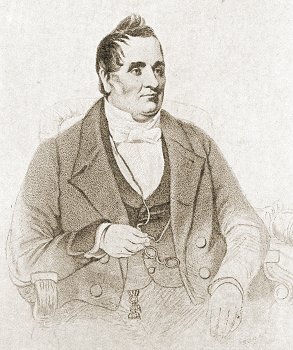
George Benjamin
Thorneycroft |
|
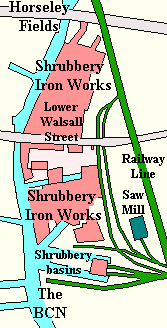
The location of the works. |
In the beginning the works were quite
small, producing about 10 tons of iron each week, but thanks to
George’s expertise the business soon grew.
In a short while the
output increased to 700 tons a week and the iron works became
well known as producers of high quality iron. The two brothers
worked together for several years, but eventually they dissolved
the partnership by mutual consent, and Edward departed. George
continued to run Shrubbery Ironworks under his
company, G.B. Thorneycroft & Company, and Shrubbery works
went from strength to strength. In the late 1830s and early 1840s railway
mania swept through the country. As a result the demand rapidly
grew for rails and railway ironwork. George Thorneycroft wrote
to the newly formed railway companies suggesting that all rails
should be tested, and that many manufacturers were supplying
inferior materials. As a result the ironworks received many
orders for the railways and became known as a supplier of high
quality axles. |
| For a time the
Thorneycroft brothers also owned and ran the
Victoria Ironworks at Leabrook in
Wednesbury. The business was declared
bankrupt, as can be seen from the notice
below. The factory was then acquired by
Fletcher, Rose & Company
and in 1852 by the Patent Shaft and Axletree
Company. |
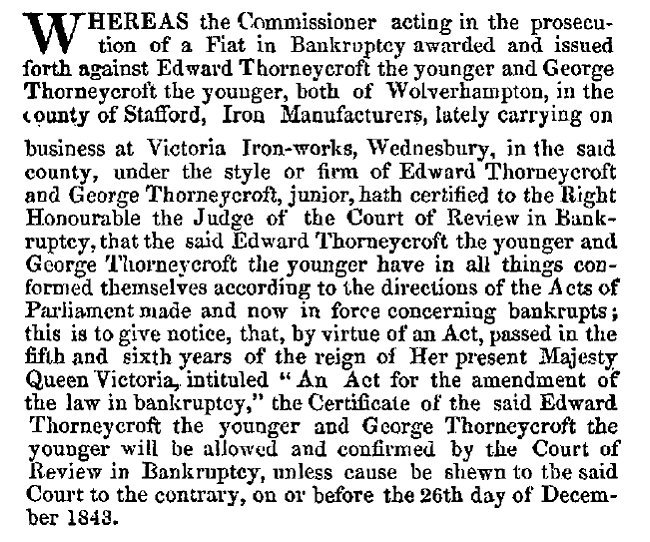
From the London Gazette, 5th
December, 1843.
|
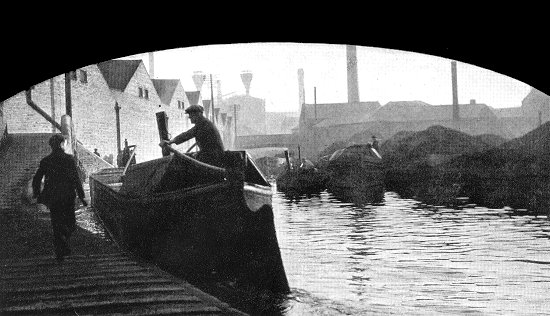
This
photograph from the 1930s gives a
good impression of the once busy
canal. Lower Walsall Street bridge
is in the background. The factory on
the left is on the site of the northern half of Shrubbery works. |
In 1848, George, a keen Conservative became
Wolverhampton’s first mayor, and the company
grew to become the largest employer in the
eastern side of the town. George died in April
1851 as the result of injuries from a boiler
explosion in 1845. Although George escaped with
his life, he remained bedridden for sometime
afterwards whilst he recovered from his
injuries. He never completely recovered from the
effects, and although he remained active for
several years, he eventually weakened, leading
to illness, and death. After his death around
1,000 Shrubbery workers subscribed to a bronzed cast-iron monument, erected
in the cemetery to commemorate the life of a well-respected
employer.
| |
|
|
Read George Thorneycroft's life
story |
 |
| |
|
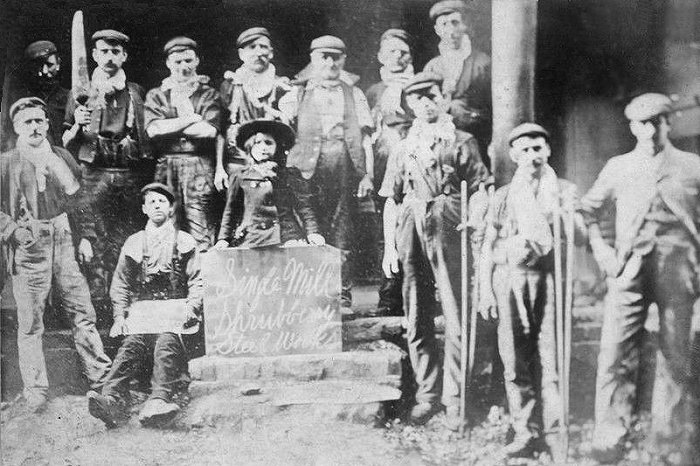
Some of the factory
staff.
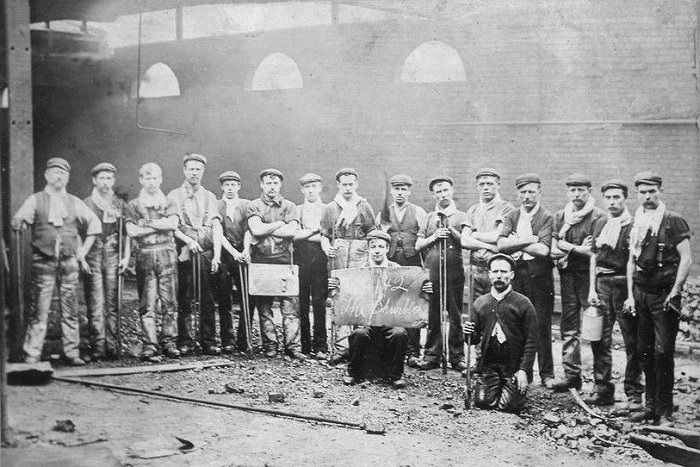
More staff.
After George’s death, G.B.
Thorneycroft & Company continued to be
successful. It grew into a large enterprise,
with many collieries, and two great ironworks,
Shrubbery and Swan Garden. The business had
grown to become the largest employer on the
eastern side of Wolverhampton.
During the Crimean War the
company made large profits from the production
of shells and armour plate, and by 1873 had 74
puddling furnaces and 12 mills and forges at its
two ironworks. |
|
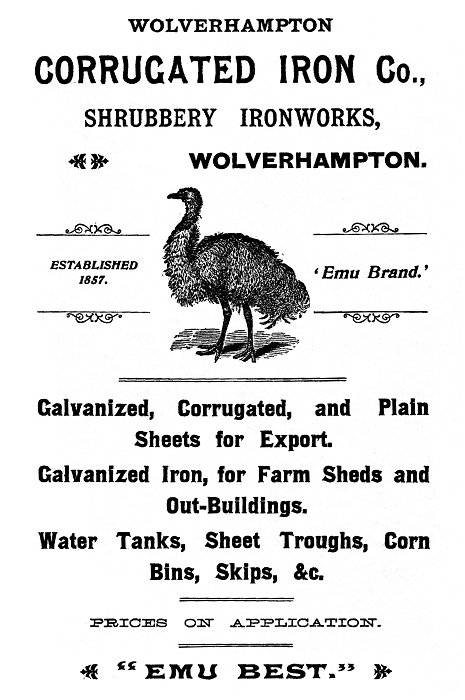
An advert from 1902. |
A happy relationship existed between
management and staff at both factories. The company paid higher
wages than average, and was well respected for it.
In the mid 1870s things started to go
wrong. The business began to run at a loss due to a recession,
and the higher wages that were demanded by the unions. After
several years of loss-making, the company closed in December
1877, the closure being blamed on the higher wages that were
paid to the workforce. The management wanted to reduce the wages
bill to cut costs, to help the company survive during the
recession. Unfortunately the workers would not agree to it.
The southern half of the Shrubbery Works were taken over by the
Corrugated Iron Company and remained in their hands until 1905
when Corrugated moved to Ellesmere Port on the Manchester Ship
Canal to reduce transport costs. 2,000 employees moved with the
company. The British Oxygen Company who supply
industrial and medical gases purchased the site and are still
there today. |
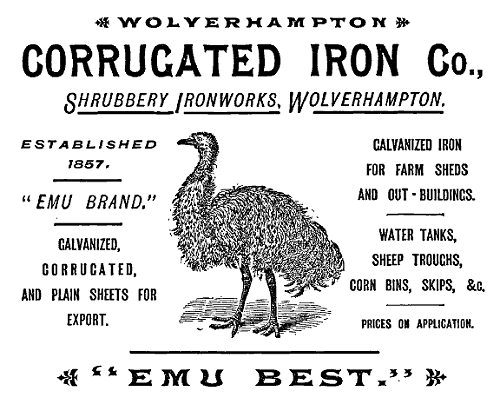
An advert from 1892.
| The Corrugated Iron Company was founded by
two brothers, John and Joseph Jones, who both
contributed much to life in Wolverhampton during
their time as aldermen. |
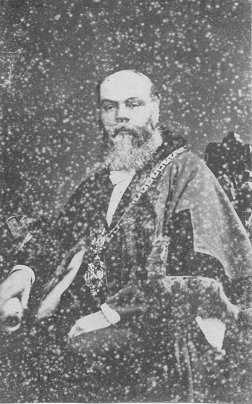 |
|
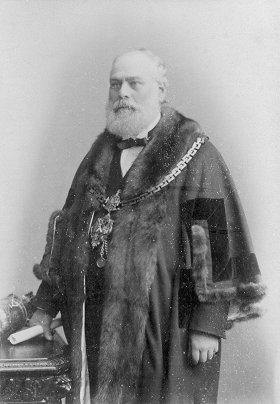 |
|
John
Jones in his mayoral robes. |
|
Joseph
Jones in his mayoral robes. |
|
The northern half of Shrubbery
Works are marked
as disused on the 1888 Ordnance Survey map. They seem to have remained in a derelict
state until they were demolished some time before the Briton Car Company's factory was built
on the site in 1912. The
new buildings were later occupied and
extended by A.J.S., and Ever Ready. |
 |
Return to the Canals
and Industry Menu |
|